Text this colour links to Pages. Text this colour links to Family Trees. Place the mouse over images to see a larger image. Click on paintings to see the painter's Biography Page. Mouse over links for a preview. Move the mouse off the painting or link to close the popup.
Choir, St Albans Cathedral is in St Albans Cathedral [Map].
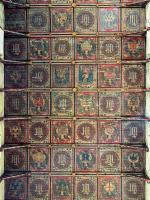
The roof of the Choir, St Albans Cathedral
Choir, St Albans Cathedral. Brass to an unknown person.
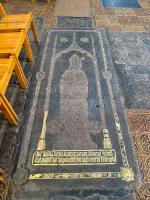
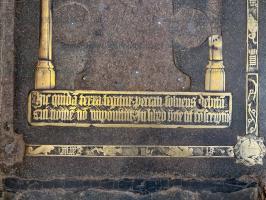
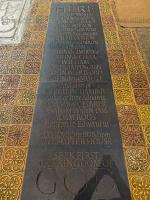
Choir, St Albans Cathedral. Floor slab listing those buried in the vault beneath the Choir.
Choir, St Albans Cathedral. Brass to monk Robert Beauner who died in the mid fifteenth century. Dressed in full monastic habit, with plain tunic and cowl (a hood). His hair is tonsured, and unusually on surviving brasses of this type, he is holding a heart in his hands bearing six drops of blood. Here it represents the deceased's wish for his redeemed or cleansed heart to be made new, as represented in the words on the scroll. The mouth scroll ascending from the figure has a text directly relating to his wish, bearing the commonly found Latin words: "Cor mundum crea in me deus" [Make me a clean heart, O God]. The words are taken from Psalm 51, verse 10. The long and laudatory Latin inscription beneath his feet tells us that Brother Robert lived and worked at the monastery for 46 years, during which time he held offices of varying importance, including sub-refectorer, spicerer, third prior, kitchener, refectorer and infirmarer. It would seem he cared both for the monks culinary and their domestic needs. The inscription ends by asking the other ‘bretheren' to say prayers to the Lord Jesus Christ so that he may be granted pardon for his sins. The brass is from the workshop known as London D. It is currently located on the floor of the Presbytery, just below the altar rail, though this is almost certainly not its original location.
Source: The Monumental Brasses of Hertfordshire by William Lack, H. Martin Stuchfield and Philip Whittemore (2009).
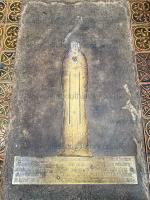
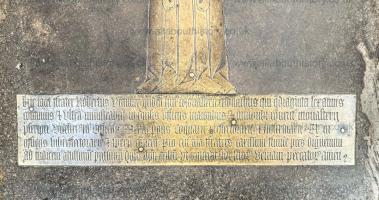
Choir, St Albans Cathedral. The Wallingford Screen constructed around 1480. It is likely the original screen would have been brightly coloured. The were replaced during the Victorian period following; the originals were destroyed during the Dissolution.
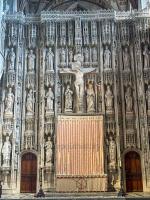
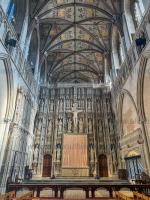
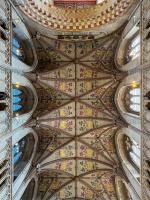
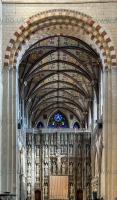
Before 27th May 1480 Anthony Grey (age 37) died. He was buried in St Albans Abbey where he has a brass in the Choir, St Albans Cathedral with a Yorkist Suns and Roses Collar.
Anthony Grey: In 1443 he was born to Edmund Grey 1st Earl Kent and Katherine Percy. He a great x 3 grandson of King Edward III of England. Coefficient of inbreeding 1.66%. Before 1475 Anthony Grey and Joan aka Eleanor Woodville were married. See Woodville Marriages. She the daughter of Richard Woodville 1st Earl Rivers and Jacquetta of Luxemburg Duchess Bedford. He the son of Edmund Grey 1st Earl Kent and Katherine Percy. They were sixth cousins. He a great x 3 grandson of King Edward III of England.


Choir, St Albans Cathedral. Brass to Robert Fayrfax, died 24th October 1521, his wife Agnes, and their children. Fayrfax was the organist of St Albans Abbey responsible for the music there from 1498 to 1502.
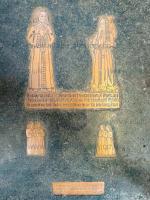
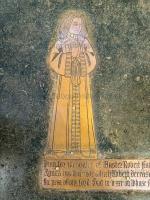
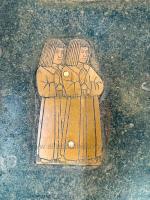
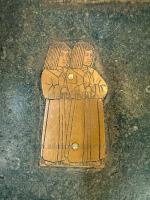
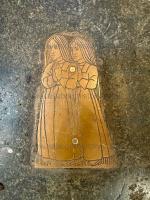
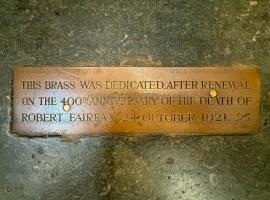
Choir, St Albans Cathedral. Chantry Chapel of Abbot Thomas Ramryge, built about 1522.
Abbot Thomas Ramryge: In 1492 he was appointed Abbot of St Albans. Collectanea by John Leland [1502-1552]. [11th May 1509] Thus and in this Manner was the said Corps of Kynge Henry the VIIth brought throughe the Cittie of London, with Torches innumerable, unto the West Dore of St. Powles, revested and mytred, received the said Corps; which, after they had encensed it, was taken out of the Charett, the said Picture lyinge upon it, and borne by XII Persons of the Garde, because of the great Waight thereof. The Duke of Buckingham with the said Earles goinge by, and puttinge theire Hands unto it. Over the which Corpes was borne a goodlie riche Canopie of Cloth of Golde by Fower Barrons, frome the Tyme that it was taken out of the Charet unto the Tyme that the said Corps was brought before the Highe Alter, where was sett a goodlie curious Light of Nine Branches; under the which Light this Corps was sett, there havinge a solempne Dirige; in the which my Lord of London was Executor Officii, and Attendant upon him the Abbott of St. Albones and the Abbott of Readinge, revested and mytred. This done, the Lords departed frome Powles, and went unto the Bishops Palice; the said Corps beinge watched with divers Knights and Herauds appointed thereunto. And on the Morrowe when the Lords were come unto the Herse againe, there were songe Three solempne Masses; of the which Three Masses the Deane of Powles sange the Firft of our Ladie, the Bisschop of Lincoln sange the Second of the Trinitie, and the Bisschop of London sange the Third of Requiem. After the which Masses done the Bisschop of Rochester made a notable Sermon; which done everie Man departed unto theire Dynner. And at theire Returne made, which was before One of the Clock, the said Corps was solempnly borne throughe the Churche of St. Powle to the West Dore, with the foresaid Canape borne over it, goinge before it the whole Queire or Powles and allso the Kyngs Chappell, whome followed the Bisshop of London, being revested and mytred, and the said Duke and Earles followinge; where the said Corps was againe laide into the Charet, and appointed in like Manner as is aforesaid. Which done everie Man in like Order as is afore exprested, accompained the said Corps, which was frome thence conveyed throughe Fleete Streete unto Charinge Crosse, where the Abbott of Westminfter, th' Abbott of St. Albones, th Abbott of Readinge, and th' Abbott of Winchombe, all IIJor Abbotts, revested and mytred, with the whole Convent of th' Abbey of Westminster, in Albes and Coops, received the said Corps, and there encensed it. Which done they with Procession solempnly conveyed it unto the West Doore of the said Abbey of Westminfter: Where the Archebishop of Canterbery and the Archeb. of Yorke, revested and mytred, solempnly received the Corps, and in like Manner incensed it; which after was conveyed out of the said Charet into the Abbey, in like Manner as it was conveyed into Powles. Where was sett the moft costly and curious Light possibly to be made by Mans Hand, which was of XIII principal Stonderds, rihly decked with Banners, and all other Things convenient to the same. Here he had his Dirige solempnly, th' Archbissiopp of Canterbury beinge Execut. Officii, upon whom was attendinge the Nomber of XVIII Bisshiops and Abbotts, revested and mytred, duringe the Tyme of the said Dirige. At the which Dirige the Bissiopp of Norwiche redd the First Lesson, the Bisschop of Lincoln the Second Lesson, the Archebishiop of Canterbury the Third Lesson. And after the said Dirige done, the saide Duke and Earles with the other Lords departed unto the Kings Palice; except certen Knights, which were appointed to watch the Corps, in like as they did at Powles. In 1520 he died.
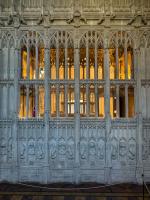
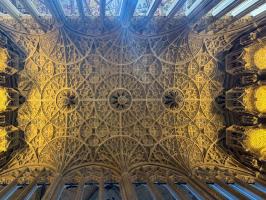
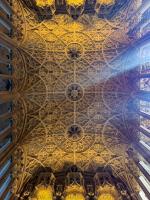
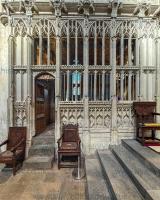
![]() Become a Member via our 'Buy Me a Coffee' page to read complete text.
Become a Member via our 'Buy Me a Coffee' page to read complete text.
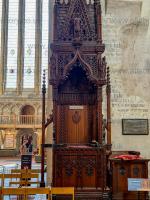
1903. Giles Gilbert Scott (age 22) installed a new Cathedra i.e. Bishop's throne, in the Choir, St Albans Cathedral.